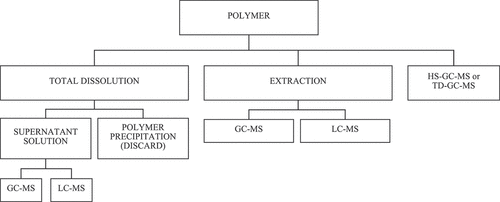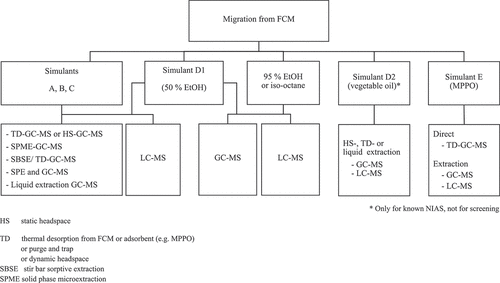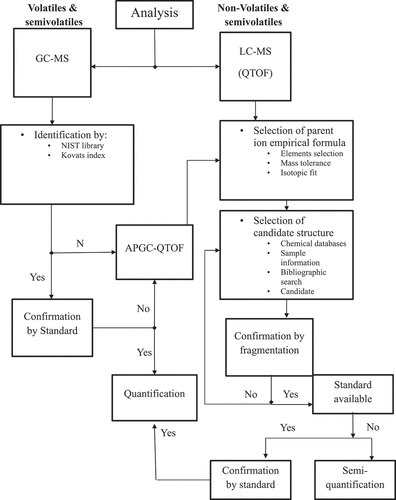Figures & data
Figure 1. Classification of NIAS, adapted from Geueke (Citation2013). A more detailed description of potential sources of NIAS is described in (Koster et al. Citation2015).

Table 1. Examples of extraction for food contact materials (FCM). Solubility of the substance should also be considered when choosing an extraction solvent
Figure 2. Screening procedure for sample preparation and analytical techniques for identification of NIAS in polymers. GC: gas chromatography; MS: mass spectroscopy; LC: liquid chromatography; HS: headspace; TD: thermal desorption.

Figure 3. Screening procedure for identification of NIAS in simulants. HS: headspace; TD: thermal desorption from FCM or adsorbent (e.g. MPPO), purge and trap or dynamic headspace; SBSE: stir bar sorptive extraction; SPME: solid-phase microextraction.

Table 2. Overview of strengths and Limitations of different analytical techniques for analysing migrants either in FCMs or in simulants after migration tests, as well as approaches for sample preparation
Table 3. Information to include in the analysis report

